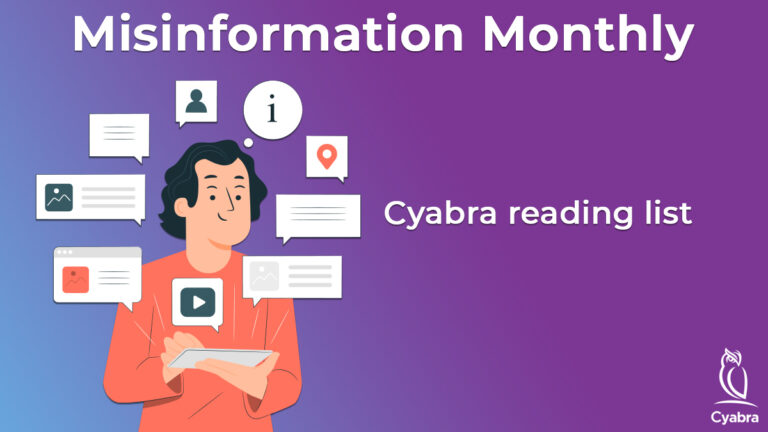With increasing concern about Pope Francis’ health, many people are turning to social media for the latest news and updates. Cyabra analyzed the online conversations about the leader of the Catholic Church to uncover the narratives being discussed. This research revealed that fake profiles played a significant role in spreading false claims about Pope Francis, fueling speculations and conspiracy theories, and distorting public discourse.
Here’s the full story:
TL;DR?
- 31% of the profiles discussing Pope Francis’ health on X were fake.
- Fake accounts generated 1,387 posts and comments, amplifying false claims about his death.
- Disinformation narratives focused on speculations, distorting official Vatican updates, and outright fake news.
Fake Accounts at the Vatican’s Gates
False rumors about Pope Francis’ health have surfaced in the past, but his recent hospitalization brought on a new wave of misinformation. Cyabra’s research was conducted between March 3 and March 10, and uncovered that 31% of the profiles discussing Pope Francis on X were fake accounts. An overwhelming 1,148 inauthentic profiles collectively generated 1,387 posts and comments, spreading false narratives across social media platforms.
Cyabra also found that 41.6% of the conversation about the pope’s health was negative, reflecting widespread concern, skepticism, and even hostility toward the Vatican.
The false narratives surrounding Pope Francis’ condition fell into three key categories:
- Misinformation About the Pope’s Health and Death
Speculations spread by authentic profiles included many posts questioning whether the Pope was still alive, pushing questions and declarations like “The Pope is dead”, “Is the Pope dead?” and “Where is the Pope?” and stoking uncertainty and mistrust. - Fake News Amplified by Fake Profiles
Fake accounts latched onto the false narrative that claimed Pope Francis had passed away, and aggressively pushed it, often while mimicking news updates to appear credible. These profiles used repeating phrases and emotionally charged language, creating an illusion of consensus around the conspiracy theory that the Vatican was hiding the pope’s death. - Official Health Updates Used for Misinformation
Many conversations referenced Vatican statements about the Pope’s health, but even those statements were commonly shared with fake news regarding his death, or responded to with the same misinformation, often drowning out the truth. Official updates were widely manipulated by fake accounts to maintain engagement.
Picture: A fake account spreading the false narrative that Pope Francis has passed away.
Fake Profiles: The Engine Behind the Lie
Fake accounts are never passive watchers in social media conversations; they are an active force driving disinformation. Cyabra’s analysis found that these inauthentic profiles were disproportionately responsible for amplifying the false claim of the Pope’s death. Their tactics included:
- Repetitive Messaging: Using the same misleading phrases to reinforce misinformation.
- Hijacking Popular Conversations: Injecting disinformation into high-engagement threads.
- Emotional Manipulation: Using charged language to provoke reactions and drive shares.
Picture: Fake profiles repeated identical messages to amplify the false narrative.
Fake Profiles Do Not Confess Their Sins
This case highlights a growing problem: the ability of fake accounts to manipulate social discourse at an unprecedented scale. As AI tools become more sophisticated, the challenge of distinguishing between real and fake profiles intensifies, adding to the already growing difficulty of discerning real information from dis- and misinformation.
For public institutes like the Vatican, and for public figures like Pope Francis, online misinformation not only shapes public perception but can also influence real-world outcomes. In this instance, the Vatican was forced to address and counter the rumors, wasting valuable time and resources combating a manufactured falsehood, and struggling to gain back the diminishing trust of a public that has been influenced by those online manipulations.
Fighting Back Against Fake Narratives
Cyabra’s findings serve as a stark reminder of the role disinformation plays in shaping online conversations. While journalists and public institutions work to dispel falsehoods and debunk fake news, AI-driven fake accounts continue to evolve, making it increasingly difficult to maintain the integrity of online discourse.
ing this issue requires vigilance from both those institutions and the broader public. Organizations must adopt AI-powered tools to detect and counteract harmful narratives, fake campaigns, and online manipulations before they escalate and irreversibly impact public trust.
Cyabra enables institutions and companies to counter the spread of disinformation. Contact Cyabra to learn how to uncover fake campaigns and inauthentic accounts in real time.


